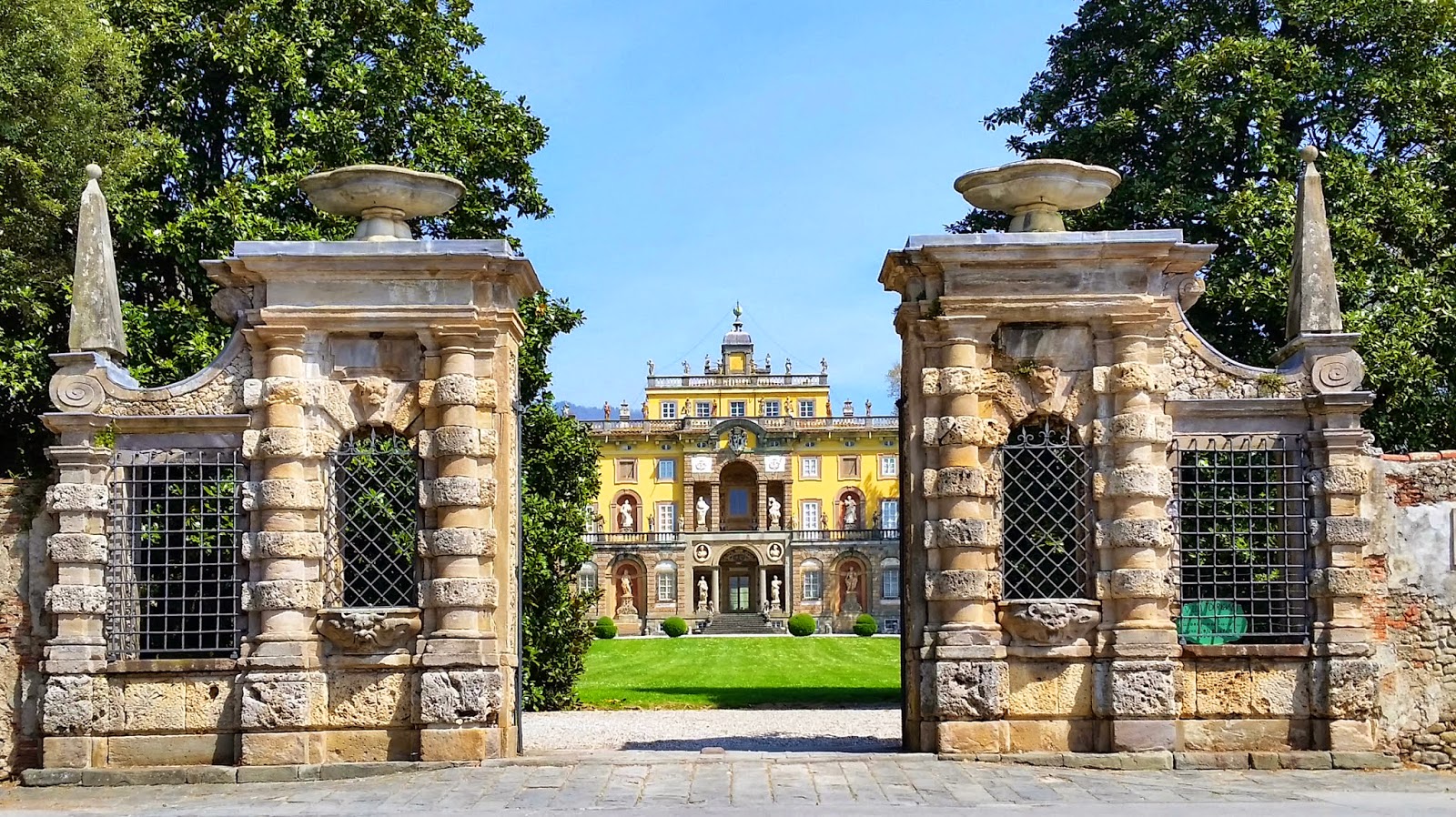The Lucca’s villas
Fascinations Baroque in Lucca, a land to discover
Lucca might be defined a special town in Tuscany. Its history tells of centuries of proud independence from Medicean power. It also tells of the European parable of a minuscule republican state that, exception made for a brief period in the fifteenth century under the rule of Paolo Guinigi, can boast steady institutions and a full independence until 1805 when it became one of Napoleon’s principalities.
However, in 1556 and later in 1628, the power went back to a patrician oligarchy. A certain number of aristocratic families started commissioning the construction of extraordinary urban dwellings; beautiful houses rich with trompe l’oeil frescoes, great staircases and magnificent furnishings. They also built fabulous villas on the nearby hills, surrounded by parks and rich fields. The local aristocrats, by this time rich thanks to the production and trade of textiles, felt the need for a totally genteel scenario.
Thus Lucca’s palaces are filled with paintings and art works and gildings. Botanical collections and exotic and rare flowers became the fad. Fairytale gardens sprang everywhere, sophisticated and formal, with grottos inhabited by mythological creatures, nymphaea, water and theatres of greenery. During the second half of the seventeenth century, Le Notre, chief gardener of the Versailles palace at the time of Louis XIV and Filippo Juvarra, would be called to work in Lucca.
Villa Torrigiani, at Camugliano, is a good example, with its parterres and large expanses of water, of the strong French influence. Still intact the extraordinary “Giardino di Flora” (Flora’s garden) which is a rare example of a Baroque flower garden, on the lower level and the nymphaeum or “Grotta dei Venti” (the Winds’Grotto) while, behind the grounds, one can admire a grand, romantic park.
In 1805, Elisa Bonaparte, with her husband Felice Baiocchi, became Lucca’s princess and took residence in the town. She started immediately an ambitious project to modernize all parks. Under her direction, in the Lucca area, all Baroque and Rococo styles made way for the English-style garden. The camellia, in all its magnificent varieties, the exotic forest trees coming from Asia and the New World, with their picturesque naturalistic untidiness, replaced the orderly ranks of boxwood, the capricious design of flowerbeds and avenues, the sensuous and opulent theatricality and the taste for geometry and control over nature as expressed, till then, by the Baroque garden.
Little remains of the eighteenth-century plant. We only find the water path running through the garden lengthwise and flanked by sculptures and green hedges. The water flows into a vast octagonal basin which was the fulcrum of Juvarra’s design. However, nothing is left of the secret, walled garden full of precious flowers arranged in geometrical parterres.
Its high point was the “Bagno di Diana” (Diana’s bath) a beautiful expanse of water with fake temple ruins depicting the hunting goddess with her nymphs, now isolated within an English-style grove. The thicket full of exotic plants dates back to the Romantic age. On the west side a magnificent and rare camellia collection makes a fine show. The Marlia’s royal park, which belongs to the Pecci Blunt family, is the most important in the Lucca area.
The villa was built in the sixteenth-century for the Buonvisi family but, in 1651, it was inherited by the Orsettis who gave it a Baroque appearance. The garden encircles the villa harmoniously: the avenue of the Ragnaia with its tall laurel and ilex hedges and leading to the graceful “Palazzina dell’orologio”, the lemon garden, the nymphaeum and the fish pond with the statue of “Leda and the Swan”, the water theatre and the vegetable one with its terracotta statues of characters from the Commedia dell’Arte”.
When Elisa Baiocchi bought the Marlia estate at the beginning of the nineteenth-century, she harmonized the pre-existing Baroque style with romantic citations, openings and new landscapes and forest trees, not to mention the opulent camellias garden. French gardener Jacques Grèber created, in the ‘20s, for the Pecci Blunt family, who succeeded the Borbones in 1918 as owners, a play area with swimming-pool and a formal garden inspired by Islamic designs following the then ruling Art Deco style. Anna Laetitia Pecci Blunt made Marlia the high point of social and cultural life in the twentieth century.
Villa Burlamacchi, at Gattaiola, is also very interesting with its interiors rich in trompe-l’oeil frescoes and eighteenth-century tempera works with allegorical and epic themes. The villa’s building was started in the sixteenth century by Nicholao Civitali. Its interior halls are a true pictorial explosion of Baroque inventions with the help of local artists like Bartolomeo de Santi and Francesco Antonio Cecchi. The villa is writer and authoress Francesca Durante’s residence and it is full of books and literary mementos.
Villa Buonvisi Oliva, at San Pancrazio, offers, instead, a Baroque imprinting still intact with its beautiful fountains like the one called “of the mermaid”, its statues and grottos surrounded by tall hedges of oaks, cedar trees, magnolias, gingko trees and horse chestnuts all exquisitely belonging to the nineteenth century.












